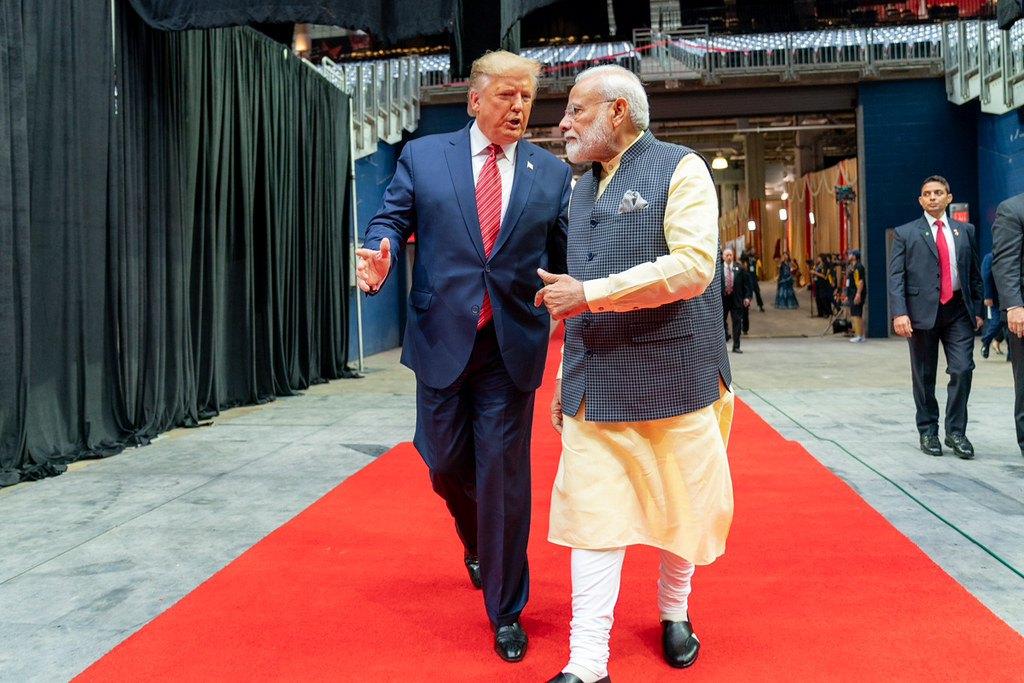
U.S. President Donald Trump’s decision to impose a 25% tariff on goods imported from India has raised concerns among experts about its potential impact on India’s economic growth. The tariff is accompanied by an unspecified additional penalty, making the overall effect uncertain.
Trump announced on his social media platform, Truth Social, that the penalties would start on August 1 due to India’s continued purchases of Russian oil and weapons “at a time when everyone wants Russia to STOP THE KILLING IN UKRAINE.” The exact details of these penalties will be key to understanding their economic consequences.
Economic Forecasts Point to Growth Slowdown
Aditi Nayar, chief economist at Icra, said the new tariff and penalty are higher than expected and will likely slow India’s GDP growth. Icra has already downgraded India’s GDP forecast for the current financial year from 6.5% to 6.2% due to tariff impacts.
Brokerage Nomura views the tariffs as “growth negative,” estimating a possible 0.2% GDP decline. Indian stock markets opened lower following the announcement, reflecting investor concern.
Despite ongoing trade negotiations and India lowering tariffs on some products to appease the U.S., the $45 billion U.S. trade deficit with India remains a concern for the Trump administration.
Rahul Ahluwalia from the Foundation for Economic Development noted that India’s tariff increase leaves it less competitive compared to countries like Vietnam and China, which are key rivals for investment and industrialization.
Impact on Key Sectors and Exporters
The tariffs could directly affect robust sectors such as marine products, pharmaceuticals, textiles, leather, and automobiles. Exporters anticipate fresh price negotiations with U.S. buyers to determine how much of the 25% tariff hike they can absorb.
India’s commerce ministry is reviewing the implications of the tariffs. The government emphasizes protecting farmers, entrepreneurs, and small and medium enterprises, highlighting agriculture and dairy as sensitive areas that stalled trade talks.
Industry leaders expressed disappointment but hope for a short-term impact and a quick resolution to the trade deal.
Political Fallout and Complications from Russia Ties
India’s opposition Congress party criticized the government’s handling of relations with the U.S., describing the tariffs as a “catastrophic failure of foreign policy.” The connection of the trade dispute to India’s ties with Russia complicates negotiations.
Despite setbacks, experts believe both countries have shared interests in concluding a trade deal. However, unresolved issues—such as India’s purchases of Russian energy and military equipment—need direct negotiation between leaders.
Negotiations are expected to continue into August, with hopes for tariff reductions and an eventual trade agreement by fall.
What The Author Thinks
While tariffs aim to pressure India into alignment with U.S. geopolitical goals, they risk damaging a critical strategic partnership. Punitive measures may hinder India’s growth and provoke retaliatory actions, complicating global supply chains. Constructive diplomacy and mutual concessions would better serve long-term economic and security interests.
Featured image credit: Trump White House Archived via Flickr
For more stories like it, click the +Follow button at the top of this page to follow us.
